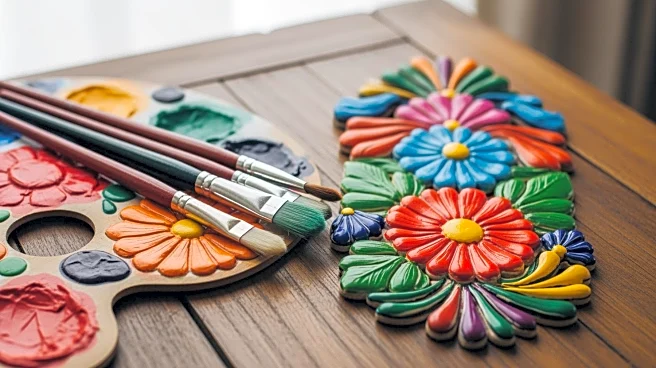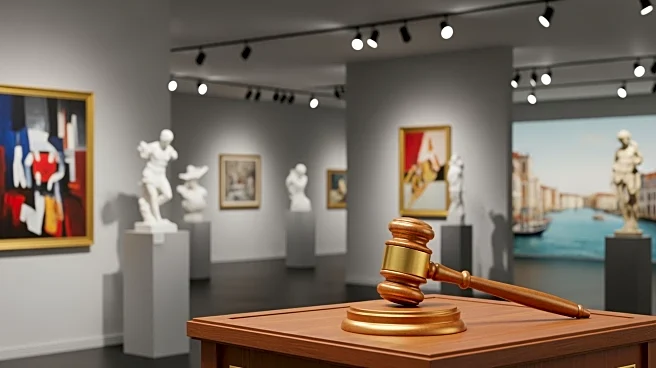What's Happening?
Frida Kahlo's painting 'El sueño (La cama)' is poised to make history as it goes to auction with an estimated price of $40 million to $60 million. This sale, organized by Sotheby's, could set a new record
for the most expensive work by a female or Latin American artist. The painting, created in 1940, is part of a private collection and will be auctioned in New York on November 20. It has been exhibited in major cities including London, Abu Dhabi, Hong Kong, and Paris. The artwork features a Judas figure, a symbol of purification, rather than a Day of the Dead skeleton, reflecting Kahlo's unique artistic vision.
Why It's Important?
The auction of 'El sueño (La cama)' highlights the growing recognition and valuation of female and Latin American artists in the global art market. If the painting achieves its estimated price, it will surpass the current record for a female artist held by Georgia O'Keeffe's 'Jimson Weed/White Flower No. 1,' which sold for $44.4 million. This event underscores the increasing demand for Kahlo's work and the broader trend of reevaluating the contributions of women and Latin American artists. The sale also raises questions about the commercialization of art and the potential for significant works to become inaccessible to the public.
What's Next?
Following the auction, the painting may enter a private collection, potentially limiting public access. This outcome is common for high-value artworks, which are often stored in tax-free zones. The art community may continue to debate the implications of such sales on cultural heritage and public access to significant artworks. Additionally, the auction could influence future valuations of works by female and Latin American artists, encouraging more collectors to invest in these categories.
Beyond the Headlines
The auction of Kahlo's painting also reflects broader cultural and historical dynamics. Kahlo's work, often associated with surrealism, challenges traditional narratives and offers a unique perspective on identity, politics, and personal experience. Her critical stance on surrealism and her commitment to social issues add layers of complexity to her art, making it not only a financial asset but also a cultural and historical artifact.













